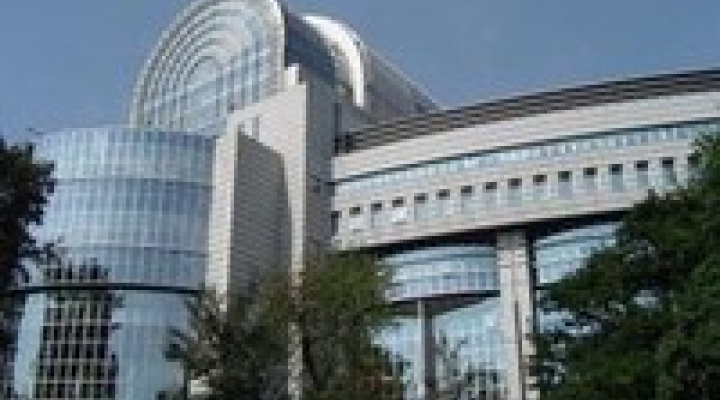2009 EP elections - FAQs on political parties and party politics
Around Europe political parties are campaigning for votes so they can send Members to the European Parliament. If elected they form a group, not with people from the same country, but with other parties from other countries who hold similar views. So for example Socialists sit with one another in a political group in the Parliament.
What are the party programmes?
You can take a look at the
programmes and priorities of the EP's political groups on their
websites - see the links below. Most MEPs are elected on party lists in
their country of election and most parties adhere to a political group
in the European Parliament, thereby endorsing common political
principles. The political groups form the basis of political life in
the European Parliament.
Formally, however, members "shall not
be bound by any instructions and not receive a binding mandate for
example from their Member State or from any private person", according
to Parliament's Rules of Procedure. Ultimately therefore, MEPs are
responsible only to their electorate.
What is the political composition of Parliament now?
MEPs
sit in political groups - they are not organized by nationality, but by
political affiliation. There are currently 7 political groups in the
European Parliament, the biggest being the European People's Party
(Christian Democrats) and European Democrats group with 288 (of a total
of 785 MEPs) and the smallest the Independence/Democracy Group with 22
members. Some 30 MEPs - the non-attached - do not belong to any
political group.
How can a new party be constituted?
After the 2009 elections the minimum number of MEPs allowed to form
a political group will be 25 representing at least seven countries.
Parliamentary power and politics
288 Members: EPP-ED - Group of the European People's Party (Christian Democrats) and European Democrats
217 Members: PSE - Socialist Group in the European Parliament
100 Members: ALDE - Group of the Alliance of Liberals and Democrats for Europe
44 Members: UEN - Union for Europe of the Nations Group
43 Members: Greens/EFA - Group of the Greens/European Free Alliance
41Members: GUE/NGL - Confederal Group of the European United left - Nordic Green Left
22 Members: IND/DEM - Independence/Democracy Group
30 Members: NI - Non-attached
How are political parties financed for the elections?
That depends on each member states' laws. Every party gets funds according to the national rules for the elections.
The
EP has, however, a special fund for "European level political parties",
defined as organisations following a political programme, composed of
national parties and individuals which is represented in several
countries. For example, it must be represented in at least a quarter of
all countries by MEPs or MPs from national or regional Parliaments or
regional assemblies.
How many MEPs will there in the new Parliament?
The
elections on 4-7 June will be the biggest transnational elections ever.
Some 375 million Europeans in 27 EU countries will elect 736 MEPs to
represent them. The total number of MEPs has steadily grown as the EU
has enlarged, rising provisionally to the current total of 785 with the
accession of Bulgaria and Romania in 2007.
Since 1979 MEPs
have been elected by direct universal suffrage for a five-year period.
The seats are, as a general rule, shared out proportionately to the
population of each Member State. Each country has a set number of
seats, the maximum being 99 (in Germany) and the minimum 5 (Malta).











